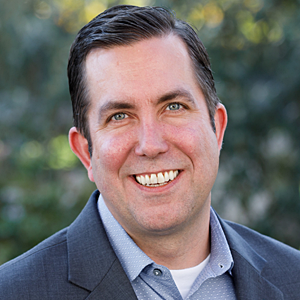Q1. Oliver, what are some of the trends driving demand for Juniper Connected Security? What combined functions and security capabilities do these platforms typically have these days?
The biggest thing we see driving demand for Juniper Connected Security is the fact that customers have an average of eight to twelve security products in their network. This has driven up complexity to manage their overall security posture, created blind spots as multiple teams manage these products, all while driving up operational costs.
The premise of Juniper Connected Security is that we protect users, applications an infrastructure by connecting multiple technologies, and bringing threat intelligence to networking infrastructure. Information security simply must be more than a firewall. Regardless of where you deploy your firewall, you will always have limited visibility into threats. Routers, switches and even wireless access points need to be more intelligent, and need to participate in network security if organizations are to counter today's threats.
This applies to our alliance partners as well as third parties. With Juniper Connected Security our business partners and customers can use our rich set of APIs or our custom threat feeds to create highly capable, easy to manage, multi-vendor defence in depth, and we use this same connectivity to make integrating security products as simple as possible.
Consider, for example, the problem of isolating a compromised device. By combining detection, monitoring, and network infrastructure together with automation Juniper Connected Security offers defenders the ability to act on threats deep inside their perimeter, including blocking threats at the access port level with — or without — an endpoint agent.
Complicating the security landscape is the explosion of IoT devices, most of which were not designed with security as their first priority. Successfully securing an organization today means having visibility everywhere, across every infrastructure that organization uses, being able to identify a threat quickly, and take action with pinpoint accuracy. In other words — See, Automate, Protect.
Juniper Connected Security allows organizations to defend their networks from endpoint to edge, and through every cloud in between. Juniper Connected Security provides the ability to ensure that your security posture and policies stay consistent. This is increasingly important for organizations of all sizes, as both users and workloads as both are now mobile, and regularly changing which infrastructures they make use of.
Q2. Samantha, what new security challenges do multi-cloud environments present and what strategy should organizations take to address those challenges?
Information security is about gaining visibility of potential threats, and preventing the propagation of malicious activity when it occurs. In a multi-cloud environment, it is easy to lose visibility because you do not control the underlying infrastructure. It is also difficult to maintain consistent security policies across multiple infrastructures, something that is critical for preventing the propagation of malicious activity.
There is a lot of discussion about "Zero Trust" in the security industry, but the only way you can truly archive zero trust is through a Connected Security Strategy. A Zero-Trust architecture can't be just a firewall with endpoint software — that's broken. Regardless of where you deploy the firewall, your line of sight will always be limited, so how can you truly have a "zero trust" architecture when all you're using is a firewall?
Juniper Connected Security allows organizations to increase visibility, making it easier to safeguard users, applications and infrastructure. This is accomplished by leveraging that infrastructure to proactively secure your network via automation and orchestration.
Juniper Connected Security interoperates with our own products, those of our partners, and even those of our competitors to help our customers ensure consistent policy across multiple infrastructures. Combined with our automation and orchestration capabilities, this dramatically reduces the risks and the management overhead associated with the inevitable adoption of multi-cloud.
Q3. Oliver, what attributes should enterprises be looking for when shopping for a Connected Security Solution?
Modern enterprise IT cannot be done without automation. Security is a fundamental consideration for all aspects of IT. As a result, the interoperability of security products should be the primary concern of any organization.
If the security product you pick today is proprietary or inflexible, there is a strong chance that you'll have to replace it in five years with something completely different. That's a potentially large problem when you consider how integrated into automation security products will be, or in many cases already are. Customers need to move away from a closed vendor eco-system - often referred to as a "platform".
Open standards compliance is a must-have. Organizations should be looking not only at the standards support of individual products, but the reputation of the vendors selling these products. Is the vendor a champion of open standards? Can you reasonably expect that, 5 years on, that product—or its immediate successor—will still be interoperable and flexible enough to be in such a critical position within your then highly automated IT infrastructure? Or is the openness of that product an artifact of its history, and will that go away as part of the digestion of that product by the parent company?
Security products can no longer be considered point solutions that meet some immediate need and are then largely forgotten about. They are strategic investments whose total life cycle through multiple iterations must be carefully considered. Organizations can no longer afford to rip and replace every cycle; they must connect and integrate with their existing investments, and be confident that their ability to do so will still exist in the future.
Q4. Samantha, what are Juniper's plans at Black Hat USA 2019? What do you plan to highlight at the event?
We're very excited to participate at Black Hat USA this year, but we're going to keep you in a bit of suspense. But, I will say we are highlighting ways to solve security challenges that arise as more and more traffic becomes encrypted. Our goal is to partner with our customers to help them achieve their organizational initiatives, like developing a Zero-Trust architecture or adopting a multi-cloud strategy, through Juniper Connected Security.












